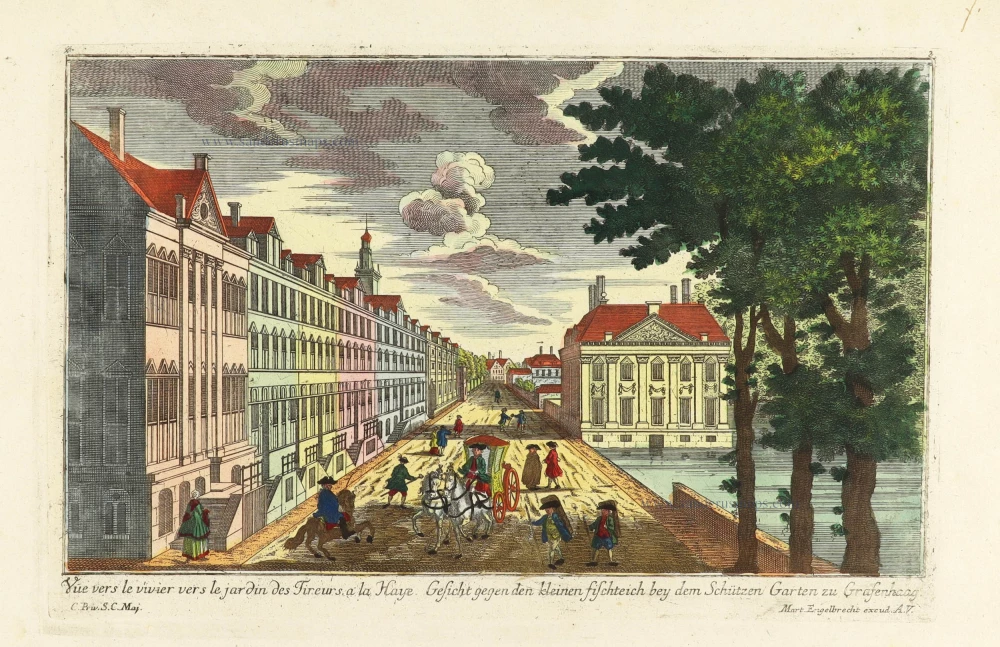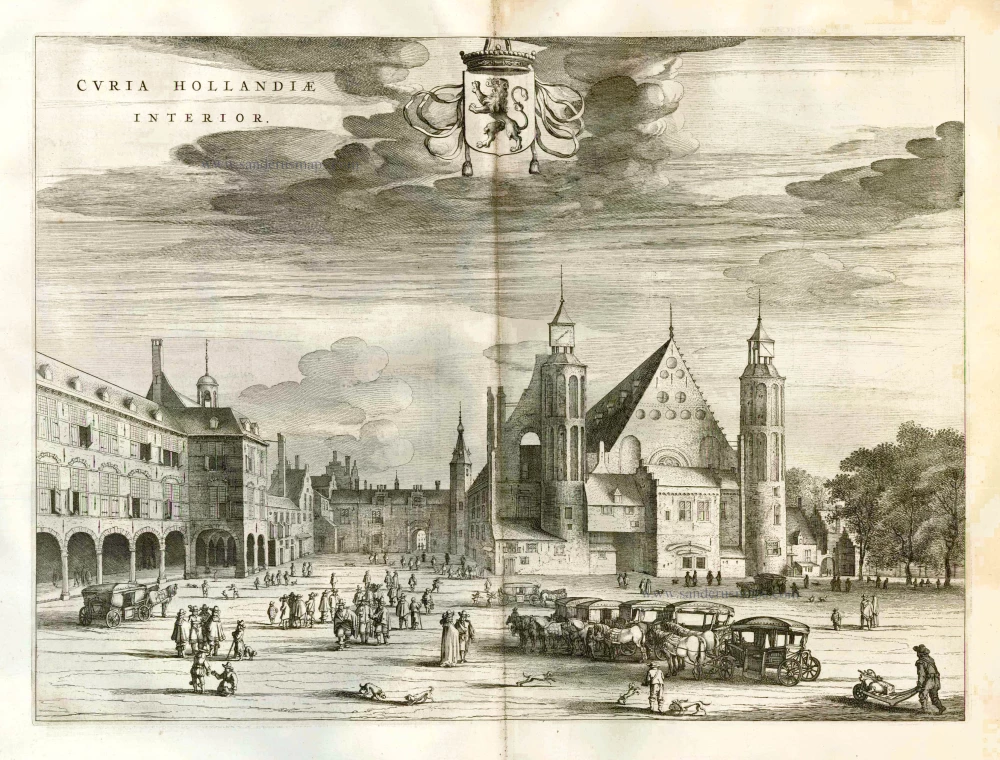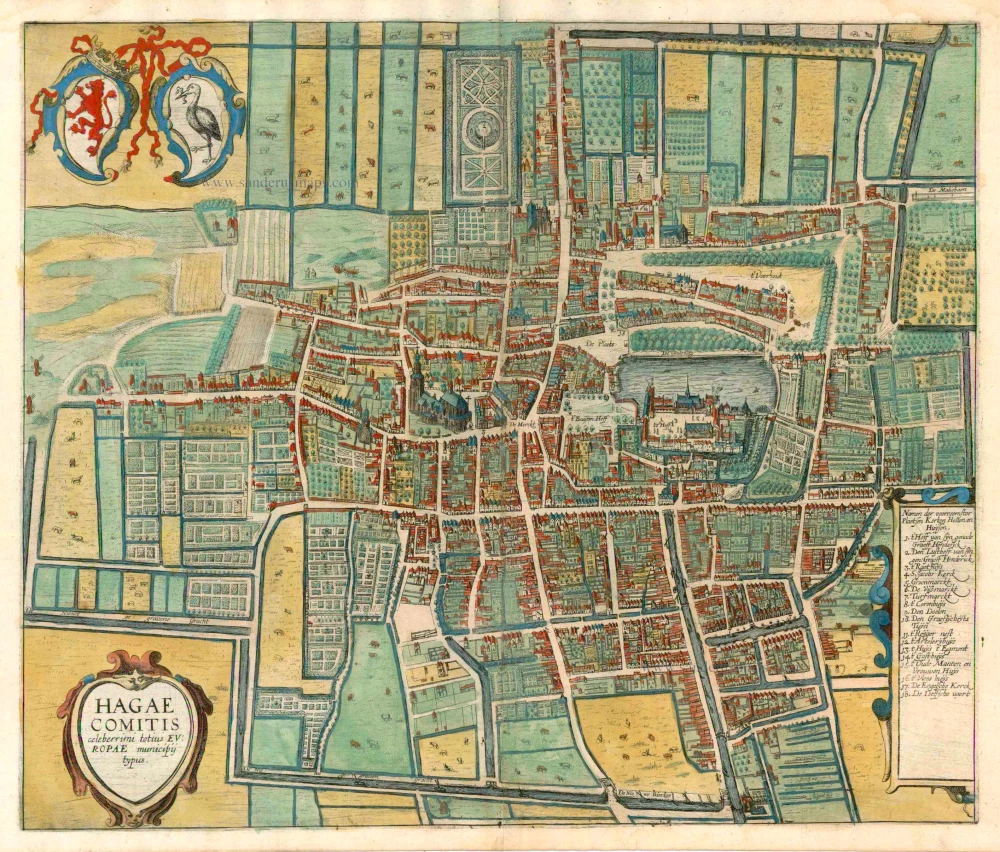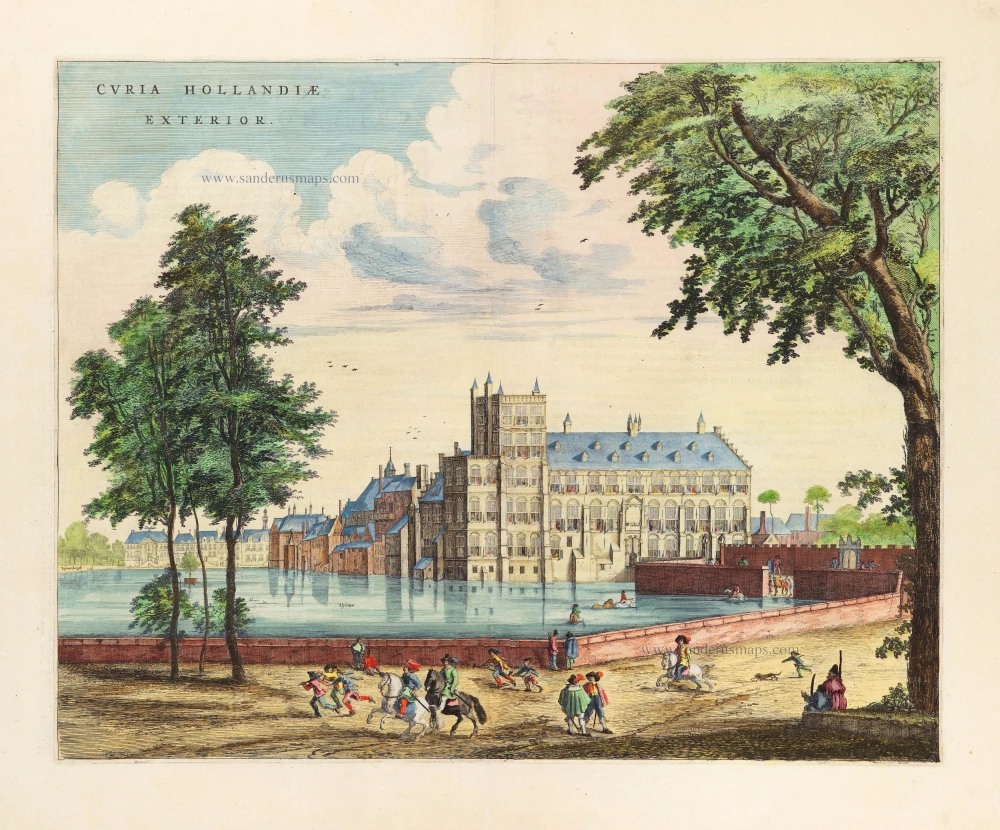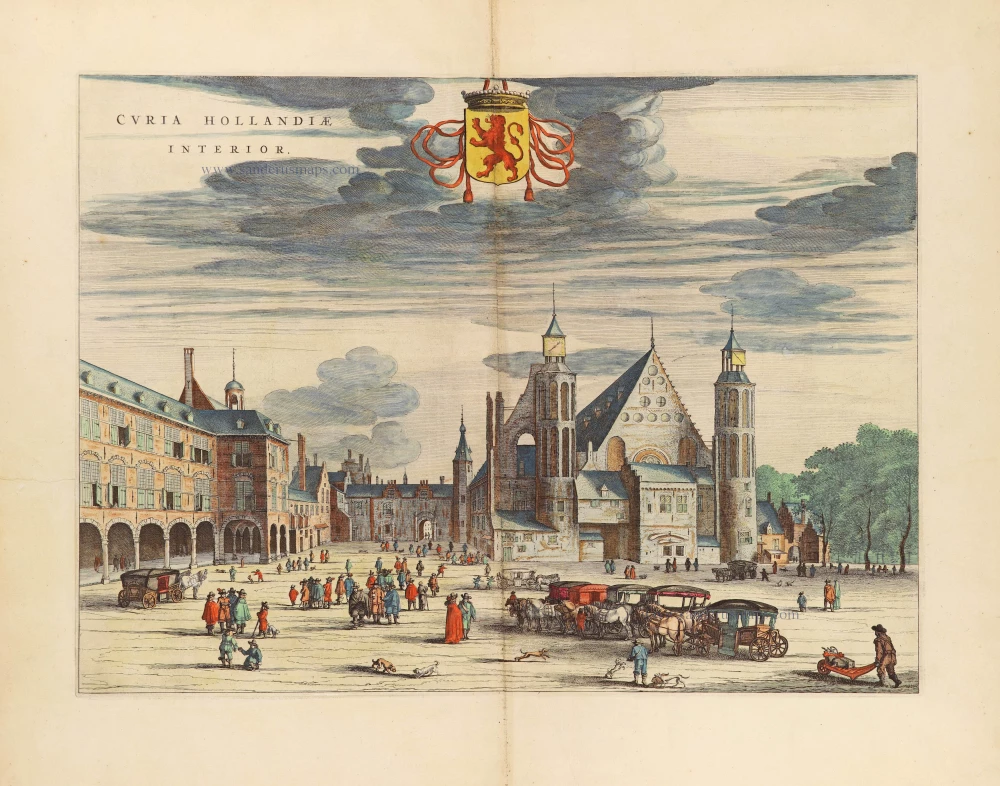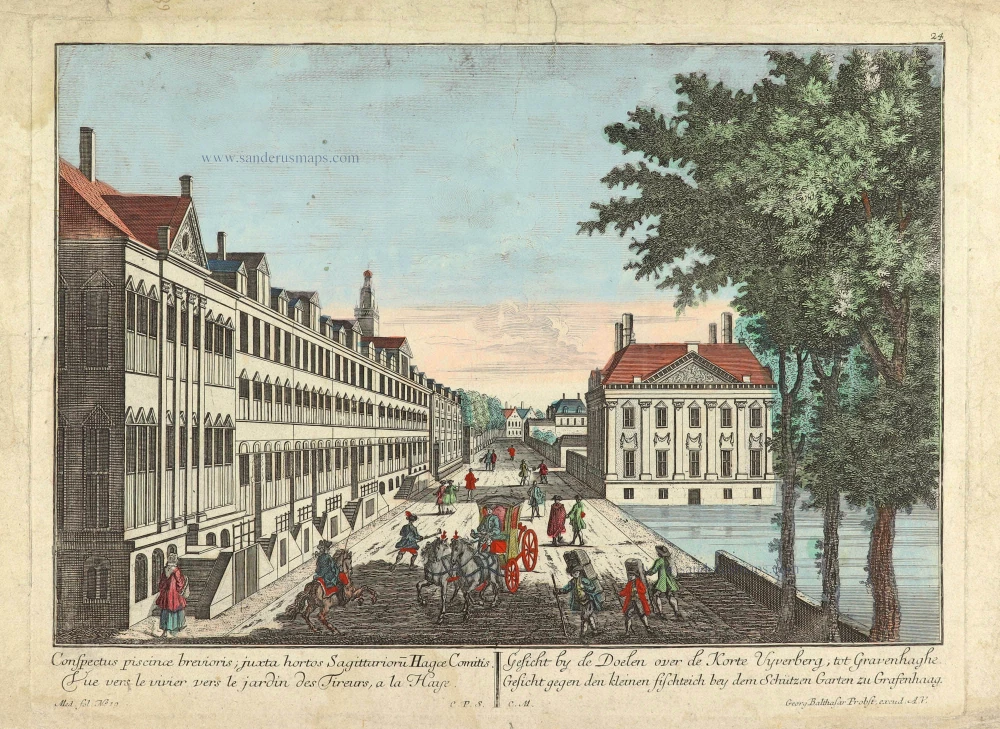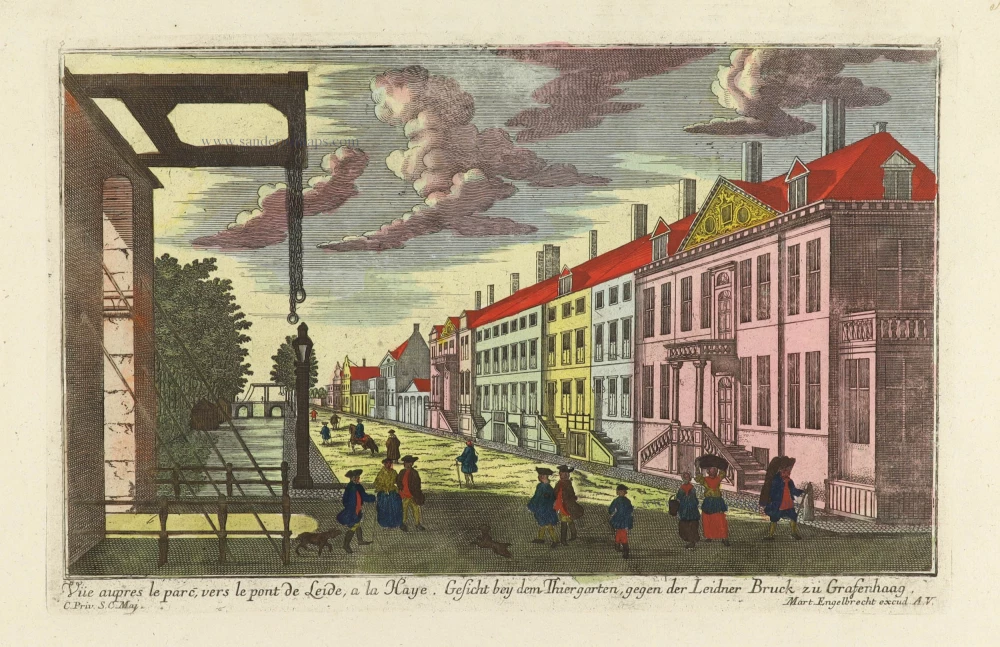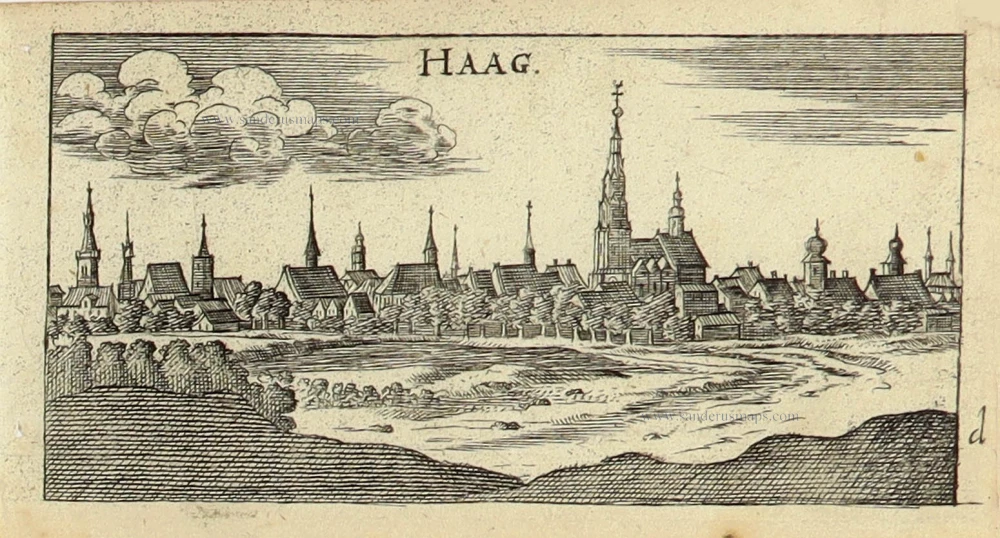Optical View of Den Haag, by Martin Engelbrecht. c. 1750
Martin Engelbrecht (1684–1756) was a notable German engraver and publisher based in Augsburg, a major centre for the graphic arts in early 18th-century Europe. Born into a family of artists, Engelbrecht built a successful career in engraving and print publishing alongside his brother Christian Engelbrecht.
Among his diverse artistic and commercial ventures, Martin Engelbrecht is primarily remembered for his pioneering work in producing optical views (vues d'optique), a popular form of print entertainment in the 18th century. These hand-colored engravings were designed to be viewed through special optical devices, such as peep-boxes, which enhanced their sense of depth and perspective. Engelbrecht’s optical views typically depicted grand architectural scenes, cityscapes, palace interiors, and imaginary perspectives of famous sites, catering to the period’s fascination with illusion, travel, and spectacle.
His optical views stood out for their intricate detail, vivid colouring, and clever use of exaggerated perspective lines to heighten the illusion of three-dimensional space when seen through viewing devices. These prints were widely distributed not only within the German-speaking world but across Europe, contributing to the broader craze for optical entertainments during the Rococo period.
In addition to these, Engelbrecht is credited with developing perspective theatre scenes — layered paper dioramas that created a similar sense of spatial depth and theatrical staging. Both the perspective theatres and optical views reflect Engelbrecht’s inventive approach to merging art, entertainment, and commerce.
Engelbrecht’s optical views were not merely decorative; they also served as visual records of contemporary architecture and urban spaces, as well as imaginative interpretations of biblical, mythological, and allegorical subjects. Today, these works are valued by historians and collectors alike for their artistic merit and for what they reveal about 18th-century visual culture and popular amusements.
Martin Engelbrecht remained active in Augsburg until he died in 1756, leaving a lasting impact on the history of European printmaking and optical media.
Vue vers le vivier vers la jardin des Tireurs a la Haye. - Gesicht gegen den kleinen fischteich bey dem Schützen Garten zu Grafenhaag.
Item Number: 31901 Authenticity Guarantee
Category: Antique maps > Europe > The Netherlands - Cities
Optical View of Den Haag, by Martin Engelbrecht.
Title: Vue vers le vivier vers la jardin des Tireurs a la Haye. - Gesicht gegen den kleinen fischteich bey dem Schützen Garten zu Grafenhaag.
C. Priv. S.C. Maj. - Mart. Engelbrecht excud. A.V.
Date of the first edition: c. 1750.
Date of this map: c. 1750.
Rare first edition.
Copper engraving, printed on paper.
Image size: 200 x 310mm (7¾ x 12¼ inches).
Sheet size: 240 x 395mm (9½ x 15½ inches).
Verso: Blank.
Condition: Original coloured, excellent.
Condition Rating: A+.
Separate publication.
Martin Engelbrecht (1684–1756) was a notable German engraver and publisher based in Augsburg, a major centre for the graphic arts in early 18th-century Europe. Born into a family of artists, Engelbrecht built a successful career in engraving and print publishing alongside his brother Christian Engelbrecht.
Among his diverse artistic and commercial ventures, Martin Engelbrecht is primarily remembered for his pioneering work in producing optical views (vues d'optique), a popular form of print entertainment in the 18th century. These hand-colored engravings were designed to be viewed through special optical devices, such as peep-boxes, which enhanced their sense of depth and perspective. Engelbrecht’s optical views typically depicted grand architectural scenes, cityscapes, palace interiors, and imaginary perspectives of famous sites, catering to the period’s fascination with illusion, travel, and spectacle.
His optical views stood out for their intricate detail, vivid colouring, and clever use of exaggerated perspective lines to heighten the illusion of three-dimensional space when seen through viewing devices. These prints were widely distributed not only within the German-speaking world but across Europe, contributing to the broader craze for optical entertainments during the Rococo period.
In addition to these, Engelbrecht is credited with developing perspective theatre scenes — layered paper dioramas that created a similar sense of spatial depth and theatrical staging. Both the perspective theatres and optical views reflect Engelbrecht’s inventive approach to merging art, entertainment, and commerce.
Engelbrecht’s optical views were not merely decorative; they also served as visual records of contemporary architecture and urban spaces, as well as imaginative interpretations of biblical, mythological, and allegorical subjects. Today, these works are valued by historians and collectors alike for their artistic merit and for what they reveal about 18th-century visual culture and popular amusements.
Martin Engelbrecht remained active in Augsburg until he died in 1756, leaving a lasting impact on the history of European printmaking and optical media.

